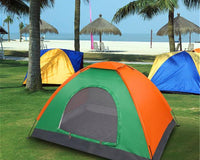LED lights, we see them everywhere in past few years. LED technology is more green than other commercially used lights and with everyone pushing their best to help our planet, alongside growing and development of LED technology, it has become more accessible to every day consumer.

A light-emitting diode (LED) is a semiconductor light source that emits light when electric current flows through it. Invention of LEDs dates back to 1927. Russian inventor Oleg Losev created the first LED, but without any industrial or commercial application. It took several decades before first LEDs were commercially used, around mid ’70. Of the last century. And from there on, LED industry and technology was developed further, and an experimental white LEDs were demonstrated in 2014. to produce 303 lumens per watt of electricity (lm/W), while some can last up to 100,000 hours. Thanks to this, we can enjoy the recent surge of LED lights and light bulbs. High efficiency and quality, combined with low production costs and final price, brought LED into every home.

An LED lamp or LED light bulb is an electric light that produces light using light-emitting diodes (LEDs). Unlike regular incandescent, fluorescent (and compact fluorescent), and halogen light bulbs that require only electricity to go through them and produce light (fluorescent and halogen do require some additional technology used for it), LED light bulbs and lights require an electronic LED driver circuit to operate from mains power lines. LED chips require controlled direct current (DC) electrical power and an appropriate circuit as an LED driver is required to convert the alternating current from the power supply to the regulated voltage direct current used by the LEDs. So even though they look more-less like a regular light bulb, the technology behind LEDs does require more than just electricity and a wire…
RGB LED technology gave us all the color combinations… We know from school that we can get any color combining red, green, and blue (hence the name RGB), so as soon as the technology for red, green, and blue LEDs was invented and commercialized LEDs became perfect solution for party lights, stage lights, mood lights, industry lights…
(Energy) efficiency of LEDs. Incandescent light bulbs are cheaper than LEDs. And although LED is becoming more popular every year and more available, incandescent light bulbs are still more widely available.

LED, however, is noted for its long lifespan, energy efficiency and low maintenance costs. An LED light can operate up to 50,000 to 100,000 operating hours, or roughly five to 10 years. It is more energy-efficient than an incandescent as it wastes less energy by producing a low amount of heat. You can set it any way you want, but in the end, LEDs bulbs use 75% less energy and they have more than double the life time of than incandescent lighting. The average American home has around 40 lightbulbs and, if they’re incandescent bulbs, replacing all of those with LEDs could result in savings of $300 a year on energy costs. That will more than make up for the price difference in one year.

Check out our offer of branded LITAKE LED lights. Litake is focused on the new energy technology field and LED lighting. Intelligent, healthy, and humanized lighting technology are being used in our products to bring users a more comfortable life. Litake LED comes with a high-brightness and low power consumption design. Each design is studied meticulously for high performance. LITAKE sustainability goal is to identify the different needs of our customers and find specific ways to meet them.












